On the 4th May 1972 about 200 boys aged between 11 and 16, put down their pencils and rulers at Quinton Kynaston School on the Finchley Road near St John’s Wood in north London. It was the start of a protest about unpleasant school dinners, caning, and the conformity of school uniforms. The boys swarmed over the school wall and not knowing really what to do next decided to all go home.
The headmaster, Mr Everest-Phillips protested to the press:
They have a choice of meals and incidents of caning have been negligible. I have only used it three times since last September. School uniform in summer consists of only a blazer.
A few days later 18 year old Steve ‘Ginger’ Finch a pupil from Rutherford School in Marylebone organised a small group of pupils from his school and nearby Sarah Siddons Girls’ School. The rally of about 60 school children met initially at Paddington Green but then started out on an eight mile march to enlist support from other schools.
The pupil power demonstration was called by the rebel Schools’ Action Union, of which self-confessed Marxist Ginger Finch was a member, who were mainly against caning, detention, uniforms and ‘headmaster dictatorships’. Eventually 800 pupils had joined the demonstration and Finch was arrested, charged with using insulting behaviour and obstruction.
Prime Minister Edward Heath decided to take no risks, remember this was only four years after students in Paris had brought down the French Government, and ordered MI5 and Special Branch to monitor the schoolchildren revolutionaries. Mr Heath asked Margaret Thatcher, then the Education Secretary to compile a report which warned:
“Some boys and girls are already beginning to develop political attitudes in an immature way…”
A march of 10,000 pupils was organised by the Schools’ Action Union and the National Union of School Students for the 17th May. The Government wanted to take no chances but were struggling to find out the exact nature and route of the march. A Conservative MP called David Lane forwarded a report based on the accounts of a group of girl ‘spies’ who had infiltrated a meeting.
“The leaders spoke with Cockney accents and spoke illogically. It seemed there were a number of middle-class kids who were dressing badly to look working-class.”
The march on the 17th May became the high point of a few weeks of pupil radical power.
With the absence of Ginger Finch (after his arrest a few days previously) and no real leadership, the event started with confusion with half of the pupils marching to Hyde Park and half marching along the South Bank to County Hall chanting “attack the pigs,” and “we want a riot.”
The protesters had planned to hand a letter of protest to County hall, home of the Inner London Education Authority commonly known as the ILEA, but after arriving at their destination they realised the letter had been lost. In fact no one really knew who had the letter in the first place. The protesters subsequently marched on to Trafalgar Square where the demonstration eventually fizzled out.
Sir Philip Allen, Permanent Secretary at the Home Office said that although the march turned out totally disorganised, it shouldn’t detract from its significance “as a symptom of subversive influence”. However, and rather disappointingly really, the era of pupil-power was over almost before it had begun. The looming oil crisis and proper grown-up militancy became more important than whether school dinners were edible and school uniforms caused everyone to look the same.
Of all the original aims of the militant school-children from 1972, only the banning of corporal punishment in British schools has universally been achieved. Not at home though of course.
Mott The Hoople – Original Mixed-Up Kid
Tags: demonstration, kids, protest, riot, school, students, teenagers
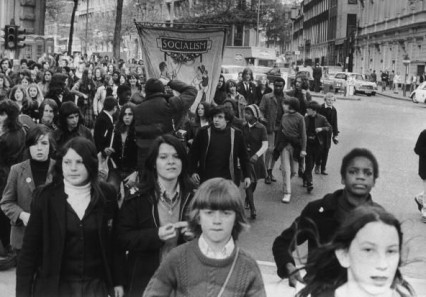
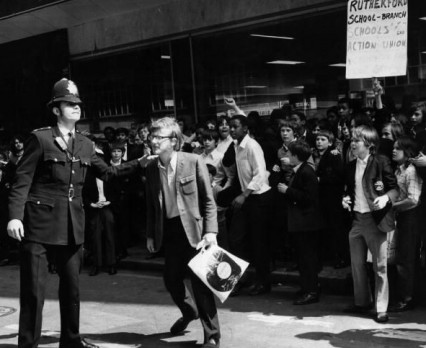
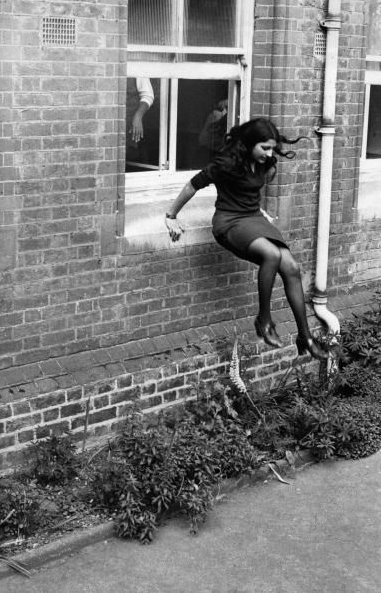
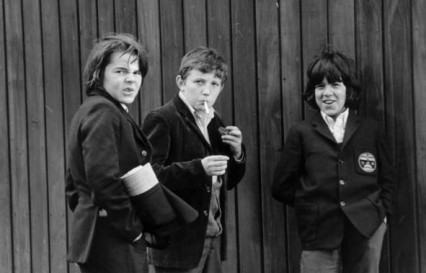
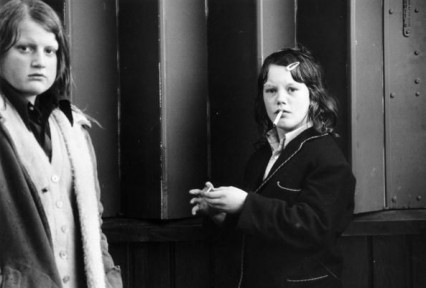
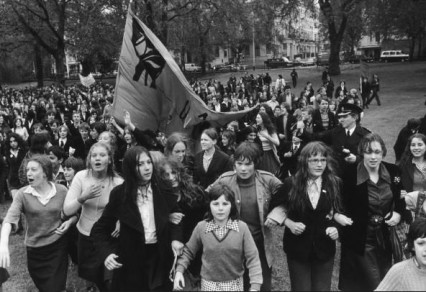
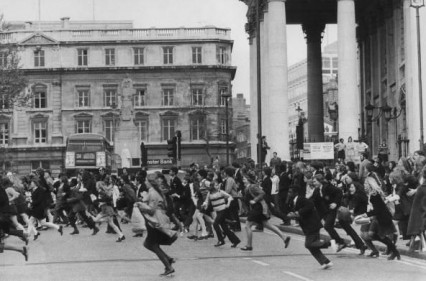
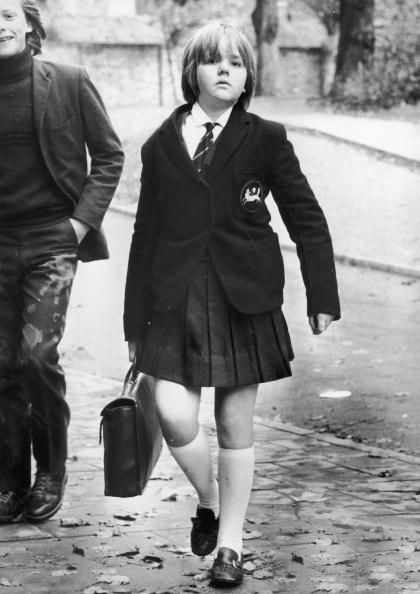
This is a welcome reminder of a wonderful moment in British social history – but is woefully inaccurate. Like Steve Finch, I was a member of the national committee of the Schools Action Union. Several different demonstrations of the time have been mixed up together. Steve Finch was arrested at an earlier demo than the London one, which was highly successful, never mind the “national” one, which was a bit of a failure. The SAU was indeed infiltrated at the time, but by a sole Daily Mail bloke. The National Union of School Students had NOTHING WHATSOEVER to do with this, they were (as Time Out noted) the Middle Class equivalent of the SAU.
The most important social result of this was that at the last demo before the London-wide one, several kids had tickets for Top of the Pops. They went along after the demo, and gave Alice Cooper the clenched fist “power” salute as he sang “Schools Out”. I helped pay for their tube tickets to get there! Rod Stewart noted this and started giving clenched fist dalutes to the kids later in the show. Within weeks every rock singer was giving this salute (now adapted into the devil salute, with two fingers extended).
Steve French was a good mate but was never the power behind SAU, there wasn’t one. A girl called Loulla Ephimou and a number of other members of North London’s Greek community, people like me, idealistic teachers and so on were members long before Steve was approached by younger kids at his own school to organise a strike. But he was ace, where are we all now? I started a “Schools Action Union” facebook group to try to bring us back together in our middle age – but no-one else has joined.
Lord, I remember writing a story at school about England being taken over by schoolchildren which involved them storming 10 Downing Street and persuading Ted Heath to hand over power (in a nice, non-violent way) . It must have been inspired by this but I’d forgotten all about it.
Holland Park Comprehensive was where the real hippy subversives were. I did a summer school in English there once and was shocked that they called their teachers by their first names! I’m sure they were all on drugs too.
Steve Wilson, is this the Top of the Pops ep? Can’t see any fists, wish I could!
http://www.youtube.com/watch?v=tWx9eyqf7Sk&feature=related
http://en.wikipedia.org/wiki/National_Union_of_School_Students
I’ve got a film researcher friend who looked for the relevant TOTP at the BBC and the one with Rod and Alice appearing on the same programme has been wiped. They’ve got a best of the year episode but that’s it.
My school Dyson Perrins in Malvern Worcs had a mini riot in 1975/6 protesting against the teachers locking us out of the school at lunch time.
The teachers were locking us out as they were also on some kind of strike.
Most of the school (probably 1000 pupils) charged out and ran around the roads near to the school and then went home.
I remenber the teacher going crazy to find the organisers.
Every body who joined in got detention. I didn’t as I never joined the riot due to being in detention at the time.
I started at Holland Park in 1972 and my brother was at Quinton Kynnaston. I was part of this protest and I remember having no idea what it was about! Holland Park was quite the school. There was at least one class where the teacher left the room for the whole period and left us to do whatever we wanted. I mean there wasn’t even any pretense of giving us something to do. There was a lot of dope smoking and alot of Chelsea moneyed folks kids.
Thanks so much for the wonderful pics and the memories.
Good to see the photographs but the public side of the SAU was always on a loser. The clandestine side, though smaller in scale, was *much* more effective.
The SAU cell at St. Dunstan’s College (SDC) in Catford ran a 2-year covert operation of espionage and sabotage against the school establishment in general and R. R. Pedley, the HM, in particular. Actions by cell members – notably the 1970 Speech Day operation – destroyed Pedley’s standing within his own profession, which added much to the stress that brought his death in 1973 – two years after the cell members left.
There is also some circumstantial evidence consistent with the view that Philip Cooper, Head of Music at SDC, (d. 29/10/71) was poisoned by an unknown pupil who had access to the technical assets that the SDC SAU cell had collected (among them keys to every door and cupboard in the school).
If the SDC SAU cell had focussed on public demos, we would soon have been crushed. Acting covertly was much more successful – so much so that our security was never broken throughout our operations.
Pedley was one of the most vicious of all public school heads. Helping him to an early death by destroying his professional reputation was one of the SAUs greatest but least-known achievements. As for Cooper, since he was a predatory sado-masochistic paedophile, if it was an SDC SAU cell member who took him out, that trumps anything else that the SAU ever did.
As it was the security of the cell was never broken
I was at Rutherford School at the time and remember the school strike well
The slipper sucked, the uniform was shit and uncomfortable and the teachers tried their best, but the kids in those days were kept in control for all the wrong reasons. I was once there when an entire house was slippered. Yeah, good idea. The few teachers who gave a shit were worth turning up for.
I was a teacher at Rutherford and I remember the strike happening. Two things in particular first the shock of many teachers that such a thing could happen the sense of loss of control that a significant number of boys refusing to do what was siad and going off the premises; then the process of restoring order when the headteacher (Mr Lanham I think) went round the year groups to convince them that authority was now restored but they were sympathised with. I have never forgotten the boy (who was he?) who got up with every eye on him and quite rightly pointed out they would not have been listened to if they hadn’t acted. Many of us opposed the cane but we knew the slipper was used I think mainly by the PE and woodwork staff.
I remember hiding on a roof in the back streets in St Johns wood.
We stormed out from Quinton Kynaston School, one of the kid’s Christian Rabbi pushed the ice cream van over,
We heard a police car coming so we climbed up onto a roof and sat there for a while. when we thought it was all clear we climbed down. A copper crabbed me, my two school mates took off, I was marched back to school.
About 1 month later I was sitting in a class room, during lunch break, playing cards with some other kids. (it was raining out side) A teacher walked in and said “put those cards away and get out of this room” I thought it was another kid mucking about so I said, under my breath, “piss off” I didn’t realise the teacher was right behind me. He pulled me off my chair by crabbing my hair and pulling me back wards towards the door. As we passed a wooden stool I grabbed it and swung it over my shoulder and hit the teacher on the head and then I ran out of school all the way home to Primrose hill. I didn’t go back to school for another week. finally Mum and Dad found out what had happened. The letter sent to my parents said that I had hit a teacher with a chair. the teacher was taken to hospital and was given stitches to his head. therefore you son has been expelled.
“IT WAS SELF DEFENSE”.
The only school that would take me was Haverstock Hill in Chalkfarm.
After that I didn’t hear any more about the protest until recently.
It was nice to read that we had the cain abolished.
Sincerely,
Geoffrey Phillips
PS, David London do you remember this?
aaah this looks cool, no-one seems to want a riot at school now. I guess we’ve got better teachers, or maybe it’s that instead of a cane we get expelled at the drop of a hat.
I went over the wall at Quintin in 1972 and through some rabble rousing girls I knew from St Marylebone girls school quickly got involved with the organisers in Golders Green. We were given Chairman Mao lapel badges and a little red book to quote from and sent out to organise.
At boy’s schools at that time we weren’t too concerned about caning, school dinners, and uniforms but we felt repressed and let down by the promises not kept.
Powerful militant young women turning up at your school was all the encouragement needed for 12-14 year old boys to bunk off and get involved!
To be honest, I think it started off as wanting to have a bit of a laugh at someone else’s expense for a change, we liked the idea of having a bit of self-determination which grew into something more profound.
As a kid growing up in London in the 60′s you played in the streets – but by the early 70′s this was no longer the case. The innocent pastime had come to an end and on the marches for once we outnumbered the coppers! A last hurrah to kids owning the streets.
It was all very innocent, nobody screwed, took drugs, got violent, or burnt anything down.
I thought this was all forgotten about until I mentioned it to my son who checked it out on the internet and found this page. Wot a larf!
Godbless
I went to St Pauls Way School in Bow, east London. I don’t know how we found out about this strike but one of the hardnuts in the 3rd year rallied us at morning break. We marched towards the front gate and the head (AJ Davenport) met us there – he told us to ‘f*ck off then!’ – so we did. we made our way to Stepney Green School and shouted for them to join us and a fair amount did! We made our way to Hyde Park by jumpng the tube but all got split up. I was fed up walkingf around by then and made my way home.
I’ve never found any of my peers that remembers this so it was great to see it on here and to hear Robert Elm’s mention it on Radio London recently!
Would rather like to see today’s kids revolt against more pressure and uniforms than ever and the petty rules.School rules should be based on the libertarian principle that only acts infringing the valid rights of others can be termed crimes-which means that how they wear their hair and what clothes they wear are none of the teachers’ damn business!
That’s me in the 6th photo from the top! Long hair, glasses,school blazer.. linking arms with another girl from Burlington. Earlier that day we heard that the girls at Sarah Siddons had been locked into their classrooms so that they could not join the demonstration. I don’t remember how we got into the building but I do remember us setting off the fire alarm so the doors were unlocked.
I had been in the SUA for a while by May 1972. Is there anyone who remebers the place we used to meet in Acre Lane, Brixton? The SAU was a kind of youth wing of an organisation whose name I have forgotten which was recruiting young ‘cadres’. Their newspaper’s banner featured the profiles of Marx, Lenin, Stalin and Mao. They were also very enthusiastic about Enva Hoxa and his Albanian regieme. My father, a dyed-in-the-wool socialist who had left the Communist Party after the invasion of Hungary could barely stand to see me selling the paper with a picture of ‘that man’ (Stalin) on its cover.
I agree with much of the analysis of the SAU and the wider scholchidren’s revolt in this article – we were part of a genuine grassroots movement and had our own ideas. But there were adults in the background who had their own agenda.
It would be great to hear from others who were involved in the SAU, but I dont’ facebook or twitter.
[...] ON the 4th May 1972 about 200 boys aged between 11 and 16, put down their pencils and rulers at Quinton Kynaston School in the Finchley Road near St John’s Wood in North London, in a protest over unpleasant school dinners, caning, and the conformity of school uniforms. They swarmed over the school wall and not knowing really what to do next, decided to all go home, writes Rob Baker. [...]
Great piece. I first became aware of these actions thanks to a clip on The Rock ‘n’ Roll Years of a girl being interviewed in a playground. As she complains about caning, someone makes her way through the crowd of schoolchildren. She is so small and young-looking you’d be forgiven for thinking she’s a pupil, but she attempts to pull the girl away, asking, “When have you ever been caned?” The kid resists, saying something like, “Get off me!” to which the teacher responds, “Get back to your lessons! Now!” Or words to that effect.
The Alice Cooper story is nice but wrong. By the time Alice was on TOTP with ‘Schools Out’ school really was out for summer. The first Alice Cooper appearance was 13 July 1972.
I remember Sadistic Mr MacDonald (Dickens Housemaster)who was a crunt and as a PE teacher took great pleasure in the use of cane and slipper…
As a member of the Browning House, he used to try and wind us up as he used to enlist the good athletes and footballers to his House, when you give him a bit of lip back he would stare at you and threaten the cane!
I was at Chisehurst and Sidcup Grammar for 7yrs while Pedley was Head. He was universally disliked and despised – especially by some of his staff . I have published a book ” Orpington 127 the history of a war baby ” about growing up in post war Britain. Its on Amazon for 9.99 . Then you can find out about the advert placed by the 6th form and pushed under his study door. ( Despite a campaign of terror he never fount who did it ! A spiteful an ambitious man
Anyone from Sara Siddons who remembers Barbara Carter please contact me.
“School uniform in summer consists of only a blazer.”
Crikey! And nothing else?
I remember going to a couple of SAU meetings in1970 when I was in the Sixth Form at Southgate School and being distinctly underwhelmed. This is a great article, though. There was a white riot in North London all those years ago
Attended Sara Siddons in 1978-9 due to the Iranian revolution.
Came from Iran and was not used to the amount of violence between teachers and students. Many times students would just storm the teacher and he/she would have to run for his/her lives…
Kids smoking was another shocker…
After reading the history regarding the 1972 events, curious as to what ever happened to what happened to Steve ‘Ginger’ Finch?
Looks like it was an interesting time for all of them. I think I would like to spend my school time in a different way.
Holland park was the flagship comprehensive of by the time I got there in 67 Wedgewood Benn was head boy and there were prefects there was disciplinre but it was a strange mix of middle class arty lefty parents(not moneyed chelsea types as described above) There was also a lot of working class black and white kids. By the time of these school strikes the school was a mess. A thouroughly enjoyable one. I seem to remember we came out on strike in protest at the sacking of an art teacher who hadposed as a life model for her class. England was great back then in many ways,nations need balance look at us now no left and horrible right wing government,no creativity or protest.
I’m researching the school strike of 1972 for a novel I’m working on. I would particularly like to hear from any women who were involved in the SAU. Two of the comments above are from women who were at Sarah Siddons but I don’t know how to contact them.
From my online research it seems that the SAU was formed in 1969, and that in 1972 there were 2 significant demonstrations: first on the 10th of May (assembling at Hyde Park then marching to County Hall, where a letter was presented to a senior ILEA official) and then another larger event on 17th May which ended up in Trafalgar Square (not sure where that one began). I’d be pleased to hear from anyone who attended either of these days – particularly women – please email me at vicky.grut@tiscali.co.uk. Thanks!